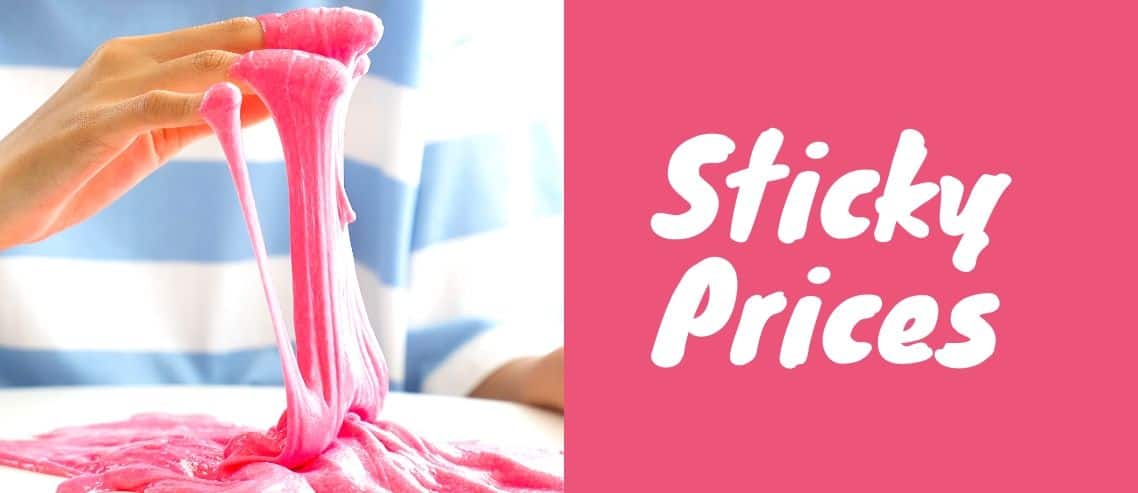Estimated reading time: 12 minutes
Back to school season is a major marketing and sales opportunity for retailers. It is a joyful experience for many kids and teenagers, allowing them to purchase their favorite products. However, 2021 is different in many ways, meaning this year’s season is similar to 2020 and differs from the pre-covid era.
The retail industry faces significant economic setbacks in 2020 due to the Covid-19 pandemic, with sales fell by 16.4% in the United States. As states and stores slowly begin to open, sales are bouncing back thanks to mass vaccination campaigns. So, how to prepare for back-to-school sales? Here are some practical tips and tricks. Read on!

- Perform a Thorough Research
Perform thorough research to ensure your products are on point. Your campaign will fail if you market the wrong products. It is crucial to do your research before developing and implementing your marketing sales and campaigns. Analyze the historical data to determine the products popular among the consumers in the last year’s season. Ask yourself:
Which products were popular among the students and teachers?
Which products consumers had bought and which ones they ignored?
Do you have the data and information available in your retail management system?
Analyze the last year’s reports and monitor the sales of specific products. The purpose is to gain insights and streamline your marketing and sales campaign. Another technique you can use is Google Trends, a free tool that explores trends in your niche or business area.
For instance, if you sell school uniforms in your shop, you can search this keyword on Google trends to gain insights and see which brands are trending in 2021. Likewise, you can identify the products in different categories and classify them for your in-store and online selling. - Choose the Right Products
Once you have gained insights from historical reports generated by your POS or retail management system and analyzed information obtained via Google trends, it is time to choose the products. The purpose is to entice your customers and encourage them to purchase your products.
Instead of putting products on your store’s shelves, you should showcase them to ensure they appeal to shoppers. Find out how students and teachers can use your products in school. For example, if you sell notepads, pencils, pens, and related products, set up a desk in your store to showcase these products with other supplies.
Similarly, if you sell school furniture, you can create a dorm room model or setting to showcase these items. You can also create brochures and flyers and place photographs in your store or online shop if you can’t build a physical desk display or dorm room in your brick-and-mortar store. - Adjust Your Prices
Setting the right prices for your products is an excellent way to attract more customers and increase sales. Pricing your product is a balancing act, and a low price is not always profitable because it may see a stream of sales without generating higher returns on investments (ROIs).
In addition, when you set higher prices for your products, you may experience fewer sales and lose budget-conscious consumers, affecting your market positioning. You have to do your homework even if you have a small store and sell school supplies.
Make sure you consider factors like business costs, consumer trends, competitor pricing, and revenue goals. Setting prices for school products are not pure math. It is a straightforward process but requires you to analyze the market trends and focus on consumer demands.
Remember, the number always behave logically, but humans are way more complex. Although you can do the math, it is wise to go beyond hard data and focus on other factors. There are different types of pricing strategies and methods you can implement in your price management or e-commerce pricing strategy. However, experts recommend the following strategies for retailers that sell back-to-school supplies.
Competitive Pricing
As the name indicates, a competitive pricing strategy allows you to use your competitor’s pricing data and lower your prices. Bear in mind that the product value drives this technique. For example, if another shop sells the same products of the same quality, and the price is the sole differentiator, you can rely on competitive pricing to attract more customers.
A competitive pricing strategy or price management technique is effective if you negotiate a lower cost per unit from the manufacturing company or supplier. At the same time, you must actively promote your special pricing. On the other hand, this pricing strategy is challenging to retain, especially if you have a small business.
Lowering your school products pricing means reducing your profit margins, meaning you will have to sell higher volumes of products than your competitors to generate profits. Customers do not always reach for products on a shelf with lower prices.
Psychological Pricing
Because students, teachers, and parents feel excited during the back-to-school season, you can use psychological pricing strategy to increase your sales. A growing body of research evidence shows that when customers spend money, they experience pain or loss.
Therefore, it is up to you to relieve or minimize this pain, leading to an increased likelihood that customers will purchase your products. Retailers would achieve this goal by pricing their products using odd numbers like 3, 5, 7, and 9.
For example, if you sell backpacks, you can price them at $29.99 instead of $30. That way, your customers will believe that you have slashed every cent off the price. Customers’ brains read $29.99 and see $29, not $30, and believe that the items have a better price.
The question is: how do you choose an odd number and use it in your pricing strategy? Research studies conducted at the University of Chicago and MIT show that the number 9 is an effective component of a retail pricing strategy.
Setting psychological pricing strategy allows you to trigger impulse purchasing. For instance, when you end prices with an odd number, your customers perceive that they are getting an irresistible deal. - Develop a Social Media Strategy
Research shows that there are over 3.96 billion active users of social media worldwide. The number of active users increases by 10.9% every year. There were 2.07 billion social media users in 2015, and the number reached 3.48 billion in 2019.
Because the number of users on social media continues to skyrocket, it is an excellent opportunity for retailers to take advantage of social networking sites, find their target customers, engage them through helpful content, drive traffic to their e-commerce site, and increase their back to school sales.
An increasing number of consumers turned to online shopping during the Covid-19 pandemic. Consumers use online platforms and social media to buy everything from toilet paper to clothing to shoes. Therefore, it is wise to include social media in your marketing strategy and focus on your social accounts.
Remember, valuable and engaging content is crucial. It is a popular technique to promote your products to students, teachers, and parents. You can also link to specific blog posts in your social media posts.
Students, teachers, and parents use social media to find quality and affordable back-to-school products. You can ramp up social media advertising, such as Facebook ads, for a small amount of money.
In addition, Facebook ads allow you to target your audience (students and parents) in a specific school district, community, or neighborhood near your retail shop or store. Likewise, you can find influencers on social media sites, such as Facebook and Instagram.
Influencers can promote your products and encourage your target audience to purchase your products. You can find bloggers in the parenting niche and request them to promote your back-to-school products.
Look at the audience of the influencer to find the right fit for your products. The purpose is to determine whether your products align with your target customer base. Make sure your check influencers’ profiles, reach, and promotional methods to ensure they can work with you and help you achieve your goals. - Create a Pop-Up Shop
Pop-up businesses have grown in recent years and added a value of over $50 billion in the United States. You can create a pop-up shop to promote and sell your products. Remember that it is a temporary retail space you create for a short period, such as during the back-to-school season.
A pop-up shop is an excellent way for online shops or retailers without a brick-and-mortar store. The purpose is to interact with your existing and prospective customers. If you have a small business, you can display your products, like school uniforms, using a pop-up shop. - Target Teachers and Parents
Teachers are an integral part of your target audience. Research shows teachers and educators make up spend an average of 1.5 billion per year. Teachers also spend an average of $490 out of their own pocket to fulfill classroom supplies requirements. When you offer teachers discounted products, not only do you show support, but you also increase your sales.
A recent study shows that 83% of teachers like a free gift with each item, 35% prefer free shipping, 34% like small discounts off the whole purchase, and 25% focus on “buy one get one special.”
In addition, 21% of teachers want retailers to provide them with a larger discount. You can use this data to create a solid promotional or marketing strategy and attract teachers in your local area.
Moreover, it is crucial to target parents and encourage them to purchase your products for their children. Back to school is a joyous and stressful time for many parents because they want to buy quality products at the most affordable price.
So, if you want to engage parents and increase your sales, make sure you offer a prize basket stuffed with creative products. For example, you can include a gift card to a local café or a bottle of wine to attract parents. - Offer Discounts
Many consumers search for discounted products. So, it is an excellent opportunity for you to establish a discount strategy on back-to-school products available at your store or online shop. Offering discounts is a crucial component of your price management or e-commerce pricing strategy. At the same time, it is a part of your marketing and promotional strategy.
You can use price matching to attract customers and generate more sales. Free shipping is another effective method to entice your existing and prospective customers. Moreover, you can set up a pop-up shop in the school to ensure students, teachers, and parents have convenience, especially if they can’t fit larger items into their vehicles.
However, studies show that many people don’t purchase from pop-up shops established at the school campus. The primary reason behind this is the unusual format and students assuming higher prices.
Another reason is that people believe pop-up shops at the school campus may not offer quality products. Therefore, you have to solve these problems and convince your target audience if you want to set up a pop-up shop at school. - Focus on Customer Satisfaction
A successful business does not only focus on generating sales and achieving higher returns on investments. It also focuses on providing an excellent shopping experience to its customers. The same principle applies to back to school shoppers. Therefore, we recommend creating a satisfactory experience by focusing on students’ interests.
For instance, if you sell backpacks, you can host a networking event and encourage students to participate in the event and explore the quality of your bags. Because students establish walking patterns during the first few weeks at school, organizing an event can attract them, allowing you to promote your products.
It is crucial to make substantial efforts during the back-to-school season, focusing on the needs of students, teachers, and parents. Engage with these people on social media, invite them to attend special events, and offer discounted rates on your products.
Customer support is crucial to your business because it retains your existing customers and attracts new ones by providing value to them. When you provide your customers with state-of-the-art customer service, you can recoup your customer acquisition costs. Likewise, you can cultivate a loyal following that does word-of-mouth marketing for your business.
Moreover, customer support service enhances consumers’ satisfaction levels, and they also provide reviews and testimonials that positively impact your business. Some of the best ways to improve customer services are:
Train your customer support agents
Use positive language and communicate clearly
Implement tools like live chat support and email communication
Ask for feedback on third-party websites
Measure and analyze the feedback to gain insights - Write Product Descriptions and Add Photos
If you have an e-commerce site or online shop, you can’t promote your products or sell them quickly without compelling descriptions and photos. The most significant disadvantage of online shopping is that users can’t touch your products.
Therefore, it is crucial to provide them with accurate information and allow them to make informed decisions. That way, you can increase your chances of boosted sales. So, write detailed textual descriptions for all of your products.
Focus on elements like material, color options, size, measurements, dimensions, and other relevant information.
That way, consumers can decide if the product is suitable for them. Make sure you add descriptions that make your business appear genuine and trustworthy. Besides textual descriptions, you must also add photos to your products on your website.
Shoot quality photos of your products from every angle, and make sure you capture the details. You can also hire a professional photographer with experience in product photography.
The purpose is to help consumers determine if the product is right for them. It also gives a competitive edge over your competitors because providing consumers with accurate descriptions, photos, and videos builds trust and increases the likelihood of boosted sales. - Writing Engaging Content
It is not always necessary to offer discounted rates and promotional offers to your customers. You can convert your target audience into loyal customers through free and valuable content. For example, if you sell school bags, you can write valuable content on relevant topics, such as:
How to choose a quality schoolbag?
How to choose the right-sized bag?
Top 10 school bags for girls
10 best school bags for boys
You can also write content other than your products. For example, you can give tips to students on academics, self-esteem, money-saving, etc.
You can use a wide range of categories for your content to engage your customers (students). Likewise, you can share your blog posts and articles on social media sites to make it even more convenient for students to benefit from the content.
Final Words
Engaging customers, promoting products, and generating higher profits are any business’s ultimate goals, including shops, retailers, and e-commerce owners who sell school products.
However, increasing your sales is not a daunting task because it requires you to establish a solid strategy and follow a step-by-step approach to achieve your goal. Follow the tips and tricks above to prepare, streamline, and optimize your back to school sales.



Leave a Reply